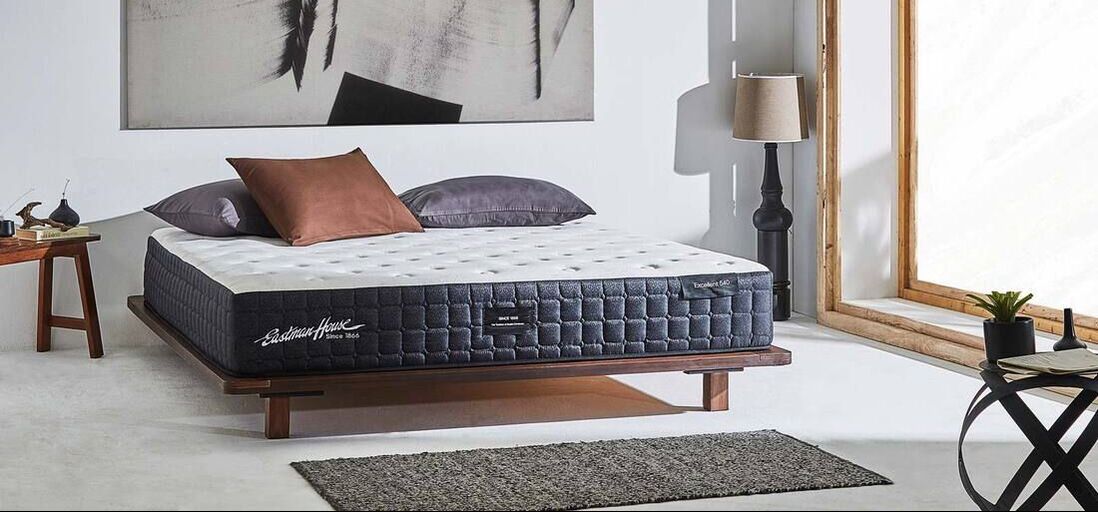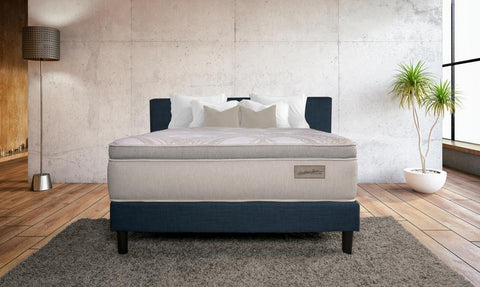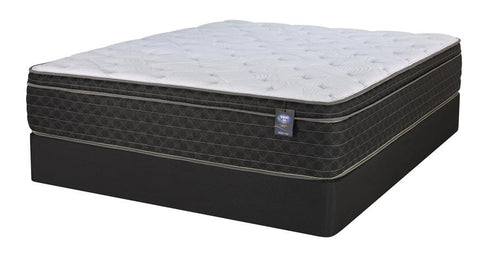
How To Take Care Of Your Mattress
You put a lot of thought and effort into selecting a mattress, and it’s natural to wonder what steps you can take to make sure your investment pays off.
Following some basic mattress care recommendations, such as cleaning it regularly and using a supportive foundation, can help you sleep more comfortably. Regular mattress maintenance may also help your mattress last longer by guarding against unnecessary wear and tear.
Caring for a mattress is relatively simple, but it helps to have a clear understanding of what’s needed. We’ll discuss how to take care of a mattress and how to know when it’s finally time to replace it.
Click to images for shopping online
Mattress Maintenance
Giving some thought to proper mattress maintenance may help you get more years out of your mattress. Taking care of a mattress includes knowing when to rotate or flip your mattress, ensuring your mattress has the proper support, and consistently cleaning your mattress to clear it of allergens and other contaminants. Changing the sheets frequently and using a mattress protector can also help keep your sleep surface clean and undamaged.
Ban Bouncing On The Mattress
To keep your mattress at its best, don’t sit on the edge of the bed regularly and don’t let the children or pets jump on it. This can put undue strain on the mattress and cause it to lose support sooner.
Rotating Your Mattress
It’s normal for a mattress to start sagging or develop permanent indentations in the places where sleepers usually lie. To evenly break in the sleep surface and avoid having one part of the bed grow softer than the rest, most manufacturers recommend regularly rotating the mattress from head to foot.
Foam, latex, and newer innerspring mattresses should be rotated every 6 to 12 months, while an older innerspring mattress should be rotated every 2 to 6 months. Some mattresses should not be rotated. For example, rotating a mattress with a zoned design may cause the mattress to be less comfortable and supportive.
Most older innerspring mattresses featured minimal comfort layers, meaning both sides of the bed had a similar feel. This symmetrical design allowed for sleepers to flip the mattress in addition to rotating it. However, modern mattresses tend to be designed with a softer comfort section on top and a firmer support core on the bottom. These mattresses are meant to always be used right-side up, and they should not be flipped.
Exceptions to this rule do exist, with some manufacturers offering flippable mattresses. Be sure to check your manufacturer’s recommendations for rotation and flipping.
Changing Your Sheets and Bedding
Washing your sheets and bedding is important for hygienic reasons, and it may also help protect your mattress from premature damage.
Sheets, blankets, and pillowcases naturally accumulate sweat, body oils, and other dirt, which can gradually seep into your mattress if bedding is not regularly changed. Bedding also attracts dust mites and other allergens, which may disrupt sleep for individuals with allergies.
In general, you should wash your sheets and pillowcases at least once a week, or more often if your pets sleep with you. Those who live in warmer climates or sleepers with seasonal allergies may also need to wash bedding more often during certain times of year.
Items that don’t come into close contact with the sleeper can be washed less frequently. You should wash duvet covers once or twice a month, comforters and blankets every 2 to 3 months, and pillow inserts every 4 to 6 months, depending on the type of pillow. Check the manufacturer’s recommendations for how to wash your bedding items.
Using a Mattress Protector
A mattress protector fits onto a mattress under the fitted sheet. Mattress protectors are designed as a barrier to keep dirt, sweat, dust mites, moisture, and other contaminants from entering the mattress. Most mattress protectors are machine-washable.
The majority of mattress protectors are waterproof or water-resistant, designed to prevent spills or bodily fluids from reaching the mattress. By keeping the mattress dry, a waterproof mattress protector can also help prevent the growth of mold and mildew. Manufacturers also sell mattress encasements, which form a seal around all six sides of the mattress to keep out bed bugs.
Mattress protectors are different from mattress pads or mattress toppers. A mattress protector’s main purpose is to keep the mattress clean, whereas mattress pads add a layer of cushioning and mattress toppers adjust the mattress’s firmness. While pads and toppers are not meant for protection, they can still help reduce some wear.
Virtually all mattress warranties contain a clause that voids the warranty if the mattress is dirty. Thus, not only do mattress protectors defend against spills and stains, but they may also indirectly prolong the mattress’ lifespan by maintaining warranty coverage.
Shopping Mattress Protector: https://lifestylefurniturehomestore.com/products/five-5ided%C2%AE-icetech%E2%84%A2-mattress-protector
Using Proper Support
Mattresses need to be paired with a solid foundation to prevent uneven weight distribution, which can lead to improper spinal alignment and potentially damage the mattress.
Traditionally, innerspring mattresses were used with box springs, which added bounce as well as support. Today, sleepers are transitioning to utilizing solid foundations or slatted bed frames for their foam or hybrid mattresses.
It is important to make sure that the support system you use is able to support not only the weight of the mattress, but also all the sleepers. Mattress manufacturers usually provide clear guidelines regarding the types of bases that can be used with the mattress. For example, heavier or larger mattresses may require a bed frame with extra legs in the center, while foam mattresses may require slats that are spaced close together. Failure to use adequate support will generally void the warranty.
How to Clean Your Mattress
In addition to washing your bedding, you may want to consider cleaning your mattress approximately every 6 months. Check with the mattress manufacturer to find out the best way to keep your mattress clean, as every model has specific care instructions. For most mattresses, users can follow some general guidelines:
Regular Cleaning Steps
To keep your mattress clean, the first step is to remove and wash all the bedding, including sheets, pillowcases, and blankets. If the mattress has a removable cover, you may be able to wash this too.
With the bed free of obstacles, you can use your vacuum’s upholstery attachment to vacuum the surface and sides of the mattress. Blot any stains with a gentle cleanser, followed by a clean cloth dipped in cold water. Be careful not to get the mattress too wet, especially if it’s a memory foam or polyfoam mattress.
Allow the mattress to dry, and then apply baking soda to the surface of the mattress to soak up any lingering smells. Give it a few hours to fully absorb, then vacuum up the baking soda using the upholstery attachment. Repeat the process on the other side.
Spills and Accidents
In addition to routine maintenance, you may need to clean your mattress if you spill something or have another type of accident. Cleaning your mattress right away may help prevent the stain from setting into the mattress fibers. Depending on what kind of stain it is, you may try using dish soap, vinegar, a solution of hydrogen peroxide, or a commercial enzyme cleaner.
If you use a mattress protector, you may be able to get away with cleaning your mattress less often.
When to Replace Your Mattress
Even if you take very good care of it, your mattress will eventually need to be replaced. On average, a mattress lasts between 7 and 10 years before it loses its supportive and pressure-relieving capabilities.
Latex mattresses tend to have the longest lifespan, lasting 7.5 to 8.5 years on average. Innerspring mattresses typically last between 5 and 6 years, foam mattresses last between 6 and 7 years, and hybrid mattresses last from 6.5 to 7.5 years. However, these numbers can vary significantly depending on the material quality and design, the sleeper’s position and body type, and the maintenance routine.
Your preferred sleeping position and body type influence how your weight is distributed across the mattress. For example, side sleepers may notice their mattress wearing out faster near the shoulders and hips, and a sleeper weighing more than 230 pounds may notice their mattress prematurely sagging.
Routinely cleaning your bedding, rotating the mattress, and removing dust and dirt will typically extend its lifespan. It’s also imperative to use the mattress with a proper base.
If you’ve had your mattress for several years, you may wonder if it’s time to replace it. Waking up with pain or stiffness, tossing and turning at night, or not feeling rested when you wake up are all clues that it may be time to consider a new mattress.
Replacing your mattress is worthwhile for your sleep and your overall quality of life. However, it can also be a costly investment. While it’s not a permanent solution, adding a mattress topper may allow you to sleep on the mattress for a little longer before needing to buy a new one
Lifestyle Furniture Homestore in Fresno, California provides a wide range of mattresses that meets every customer's needs. Besides, if you haven't known which mattress suits you the most, our staff are always ready to give you helpful advise and resolve your concerns. Lifestyle Furniture, Furniture Your Lifestyle!








